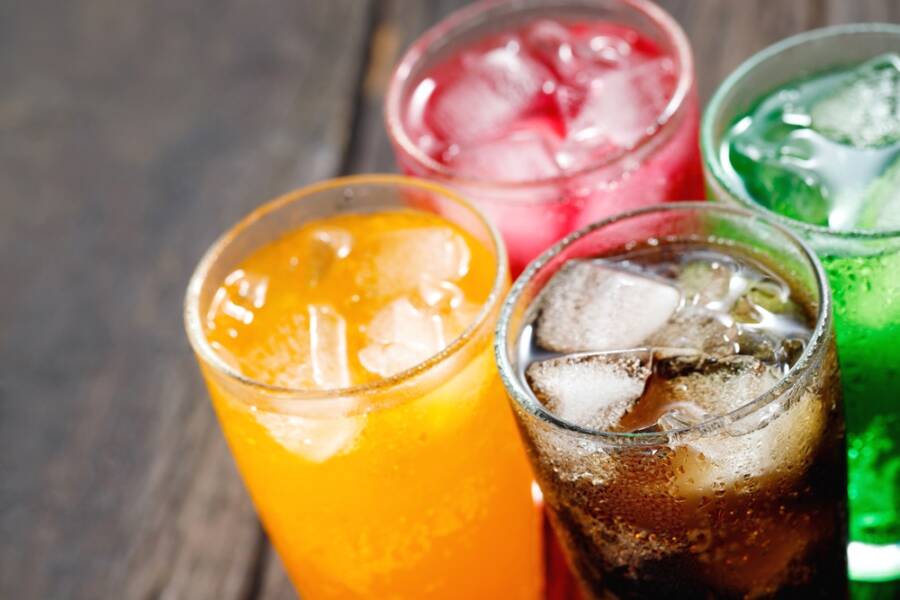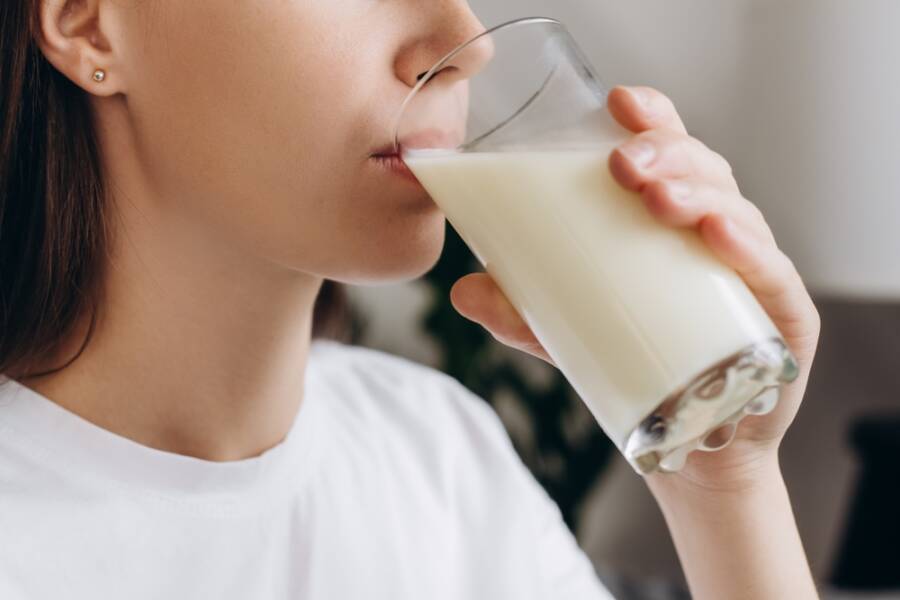These ingredients give the saying “Your are what you eat” a whole new meaning!
What we eat is extremely important. It reflects on our physical conditions but also our mental and emotional health. Needless to say, it is essential that we have an overall healthy diet, even if we do slip from time to time.
Unfortunately, in spite of our efforts to stay on a healthy path, there are still foods out there that contain all sorts of disgusting ingredients or chemicals that would never cross your mind. Luckily, people have started paying attention to labels more and more, realizing that some of their favorite foods include things they would never eat if given a choice.
Read on to find out 11 disgusting ingredients that you have been eating without even knowing.

Flame retardant in soda
Brominated vegetable oil has been initially created in the 1920s as a flame-retardant for plastic bags. Nowadays, you can find as a food additive in foods and beverages, especially sports drinks, fruity-flavored drinks and sodas.
“Exposure to BVO is associated with several types of health harms,” explains Tasha Stoiber, senior scientist at the Environmental Working Group. In recent years, the consumption of BVO has been associated with skin irritations, memory loss, headaches and impaired coordination. For this reason, the FDA has proposed the ban of BVO as food additive. Although it is no longer widely available, the ingredient can still be found in certain foods and drinks, so make sure you read the labels!
Beef treated with ammonia
It’s not a pretty picture when it comes to meat production factories. In many such places, thousands of cows are kept together, with bacteria thriving in such environments. Preventing meat contamination is a difficult task.
One method to keep meat free from contamination is by treating the meat with ammonia. But if ammonia gas is used, then the meat can no longer be considered organic. Some says that even after bathing the meat in ammonia, bacteria will not disappear completely. In small quantities, ammonia aka the pink slime may not be harmful, but if you’re an avid consumer of beef, then you might want to avoid processed foods which have a higher content of ammonia and other unhealthy ingredients.
Cloned cow’s stomach
Most of us have probably never heard or rennet. But it is actually a quite common ingredient in cheese. Rennet is an enzyme taken from the stomach lining of young ruminates, namely calves, lambs or young goats. The procedure to extract rennet is not cheap, therefore, a cheaper method is being used by many cheese manufacturers in the United States: genetically modified calf stomach.
In other words, the stomach is cloned to obtain more rennet for lower production costs. Apart from being kind of gross, the long-term effects of rennet on health are not clearly known. More than that, being an enzyme, rennet is not usually included on the ingredient list on food labels. You’re simply eating it without knowing what kind you’re consuming, the one coming from real mucosal lining or from the cloned one.
Salad dressings and paint chemicals
Eating salad is healthy, but not when you add all sorts of dressings to it. That’s because many salad dressings are packed with titanium dioxide, an inorganic compound used as pigment for paint and sunscreen. The problem with this compound is that is has been found to contain lead, which, needless to say, can have serious adverse effects on one’s health.
Unfortunately, titanium dioxide is added to many types of salad dressings, coffee creamers or icing. Although its purpose is to enhance food’s appearance, its effects on health can be quite ugly.
Crushed bugs
That’s right! The color red given to certain foods comes from carmine. How is carmine developed, you ask? Well, from crushing the stomach of a female African beetle known as Dactylopius coccus. So, next time you want to eat some red candies or drink a red-colored juice, think about these little insects too.
To avoid any unpleasant surprises, pay attention to ingredients like carmine, cochineal, crimson lake or natural red #4. They might not be extremely harmful to your health, but they are rather disgusting if you think about it.
Read also: 8 Surprisingly Unhealthy Foods You Can Enjoy Without Feeling Guilty

Milk with sex hormones
Milk production fifty years ago was lower than it is today. One main reason is that cows are now given genetically engineered synthetic ingredients to produce more milk. Such ingredients include sex hormones and growth hormones, such as recombinant bovine somatotropin (rBST).
It has been found that rBST can cause potential harm in people, with researchers linking the ingredient to pre-menopausal breast cancer in women, as well as prostate and colon cancer. Luckily, many countries have banned the use of this ingredient, with farmers in the United States using it less and less.
You might want to learn more about: The Worst 7 Milk and Food Combinations! Your Stomach Will Be Upset!
Shrimp and cleaning chemicals
If you’re a fan of seafood, you might want to pay attention to the type of shrimps that you’re eating. That’s because shrimp farms are extremely dangerous, as they can contain mouse, rat hair or insects. To decontaminate them, producers use chemicals to clean the shrimps and the shrimp farms, but some of those chemicals remain. And you could very well be eating them too.
This is especially valid for imported shrimp, especially because only 2 percent of such imports are inspected, so you might want to stick to eating domestic shrimp.
Mushrooms with maggots
For some, maggots may be considered a delicacy. But to most people, eating maggots is rather disgusting. Even more disgusting is the fact that the Food and Drug Administration allows up to 19 maggots or 74 mites in small cans of mushrooms. So, apart from mushrooms you also get creepy crawlies on your plate.
Some would say maggots are a much better alternative to BPA, an industrial chemical associated with cancer, obesity and heart attack. BPA is used in the manufacture of various recipients, including the ones in which most canned goods are stored in.
Flesh eating bacteria
Sadly, this is not a joke. Many of the meats we buy from supermarkets are full of bacteria, some more harmful than others, like the MRSA bacteria. According to various studies, approximately half of the meat we find in supermarkets are contaminated with these deadly bacteria.
How to stay away from it as much as possible? Look for organic farms that sell organic meat and eggs instead of buying the highly processed ones found in grocery stores.
Shampoo on produce
Shampoo, pesticides, but also nail polish or vinyl shower curtains usually contain chemicals such as phthalates. Such chemicals have also been found on the produce in supermarkets. That’s because producers have been using human sewage sludge as fertilizer more and more in recent years, increasing the risk of exposure to such chemicals.
It has been found that consumption of foods contaminated with such chemicals, even when ingested in small amounts, can cause health issues such as asthma, allergies, skin irritations and the like.
Feathers and human hair in bread
Yuck! Or should we say duck! That’s because an ingredient often used to extend the shelf life of various products, called L-cysteine, is derived from human hair, duck feathers and hog hair. The culprit’s name is L-cysteine and it is generally added to bread to improve its texture and make it softer, easier to handle.
So, next time you’re going to your favorite bakery, it wouldn’t hurt to ask what your favorite bagel or bread contains. Apart from being utterly disgusting, consuming something derived from humans is also against the belief of certain religious.







